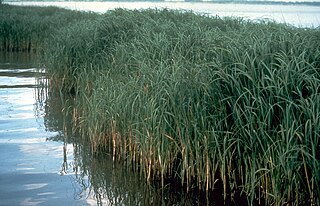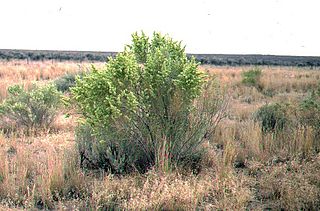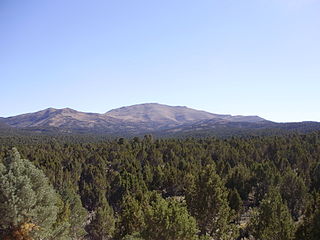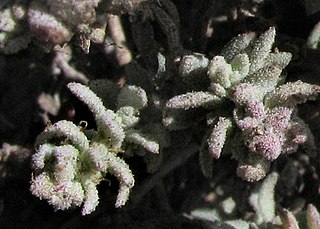Saltbush scrub is a Mojave Desert plant community and vegetation type, found above and beyond the alkali sink Shadscale scrub type.

The Mojave Desert is an arid rain-shadow desert and the driest desert in North America. It is in the Southwestern United States, primarily within southeastern California and southern Nevada, and it occupies 47,877 sq mi (124,000 km2). Very small areas also extend into Utah and Arizona. Its boundaries are generally noted by the presence of Joshua trees, which are native only to the Mojave Desert and are considered an indicator species, and it is believed to support an additional 1,750 to 2,000 species of plants. The central part of the desert is sparsely populated, while its peripheries support large communities such as Las Vegas, Barstow, Lancaster, Palmdale, Victorville, and St. George.

A plant community is a collection or association of plant species within a designated geographical unit, which forms a relatively uniform patch, distinguishable from neighboring patches of different vegetation types. The components of each plant community are influenced by soil type, topography, climate and human disturbance. In many cases there are several soil types within a given phytocoenosis.
An alkali sink is a salty basin land form. The term may also refer to a North American desert vegetation type (biome) characteristic of that landform. Rainwater drains to the basin and collects in areas where it cannot penetrate the soil due to a layer of clay or caliche, producing a pond or lake. When the water evaporates, it leaves behind increasing amounts of salts in the soil. Plants that tolerate the extreme salt concentrations are known as halophytes. It is generally below the saltbrush scrub vegetation type, which is typified by less salt tolerant species than alkali sink types.
Contents
Halophyte plants must deal with salt in the soil, but in less high concentrations than are found in the alkali sink shadscale scrub zone. [1] Alkali sink vegetation grades into saltbrush scrub. [1]

A halophyte is a salt-tolerant plant that grows in waters of high salinity, coming into contact with saline water through its roots or by salt spray, such as in saline semi-deserts, mangrove swamps, marshes and sloughs and seashores. These plants do not prefer saline environments but because of their ability to cope with high salinity in various ways they face much less competition in these areas. The word derives from Ancient Greek ἅλας (halas) 'salt' and φυτόν (phyton) 'plant'. An example of a halophyte is the salt marsh grass Spartina alterniflora. Relatively few plant species are halophytes—perhaps only 2% of all plant species.














